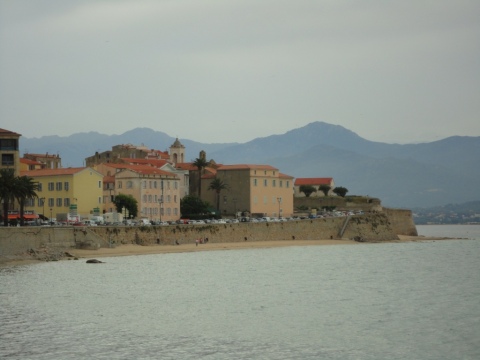
Location, Location, Location: the Importance of Setting in Fiction
Novels are clearly about people and their stories. But I have always been a great believer in the importance of setting in fiction. It influences characters in so many ways and can tell you a lot about them. You also have to create a believable world for your readers to see in their mind’s eye.
This was reinforced for me when the author Tracey Warr gave a workshop at our local Parisot Writing Group this week.
If you’re writing about a real, present-day place your task is somewhat easier than if you are writing about a place as it might have been in the past. Dickens saw directly the bustle, grime and poverty of Victorian London, for example, so it wasn’t a great leap of imagination for him to describe that setting.
Tracey, on the other hand, whose novels are set in the early Middle Ages, had to imagine what Toulouse might have been like in that period. Although she had the help of a contemporary map and other sources, that doesn’t give you much of a clue about the sounds, smells, tastes, etc. that you might have found there. That’s where imagination comes in. It’s not only about what the place looked like but also about how people experienced living there.
So Tracey had us wandering about the village for 10 minutes making notes about what we experienced. This is a great exercise because it makes you focus on all the senses. This is essential if you are going to give a rounded view of a place. If you concentrate hard enough, you also detect the impressions behind the impressions, i.e. those things that ordinarily you ignore or take for granted.
Tracey also reminded us of the importance of objects in fiction. Sometimes an object can become the leitmotif of a book. Look at the ring in Lord of the Rings. In my own novel, The House at Zaronza, set in Corsica, a stylet (thin, sharp-bladed knife often associated with vendetta killings) appears quite often as it passes through different hands. I didn’t plan it like that, but it kept cropping up.
My novel posed me some challenges in terms of setting. It’s set in early 20th-century Corsica and at the Western Front during World War I. I know Corsica quite well. Many of its villages are remarkably unspoilt and you can imagine how they would have looked in the past.
But what was it really like to live there, i.e. not just how did it look, smell, etc., but what were the cultural codes and mores that people grew up with?
Corsica has always had its own distinct culture and beliefs. Surprisingly little was written about it in English until the books of Dorothy Carrington, who “discovered” the island just after World War II. My novel owes a lot to her meticulous research and quest for the authentic Corsica among the ordinary people.
I’m not sure I got it all right. The main character, Maria Orsini, is a young woman who has had a strict upbringing in a patriarchal society. It’s not easy to know how women at the time experienced this, since there are few documentary sources that record their views. So I had to fall back on my imagination to portray it through her eyes.
Now, among other things, I’m working on another Corsican novel set further back in the 18th century. That poses even more challenges in terms of setting and culture. But it certainly exercises my imagination.
You might also like:
Corsica, Setting for THE HOUSE AT ZARONZA, a top destination
Why Corsica Should be a Happy Hunting Ground for Authors
Ten Inspiring Things About Corsica, Part 1
Ten Inspiring Things About Corsica, Part 2
Copyright © Vanessa Couchman 2015. All rights reserved.
I sometimes forget my setting, even though I have a clear idea where it is. Reading ‘The House at Zaronza’, I could tell that you were weaving in all the elements. Brilliant.
LikeLike
It’s easy to assume that because you have it in your head, everyone else must be able to visualise it, too! I had to keep thinking of that when I wrote Zaronza – and also to remember to include all the senses and not just the visual. Thank you for the kind comments.
LikeLike
Reblogged this on Crooked Cat's Cradle.
LikeLike